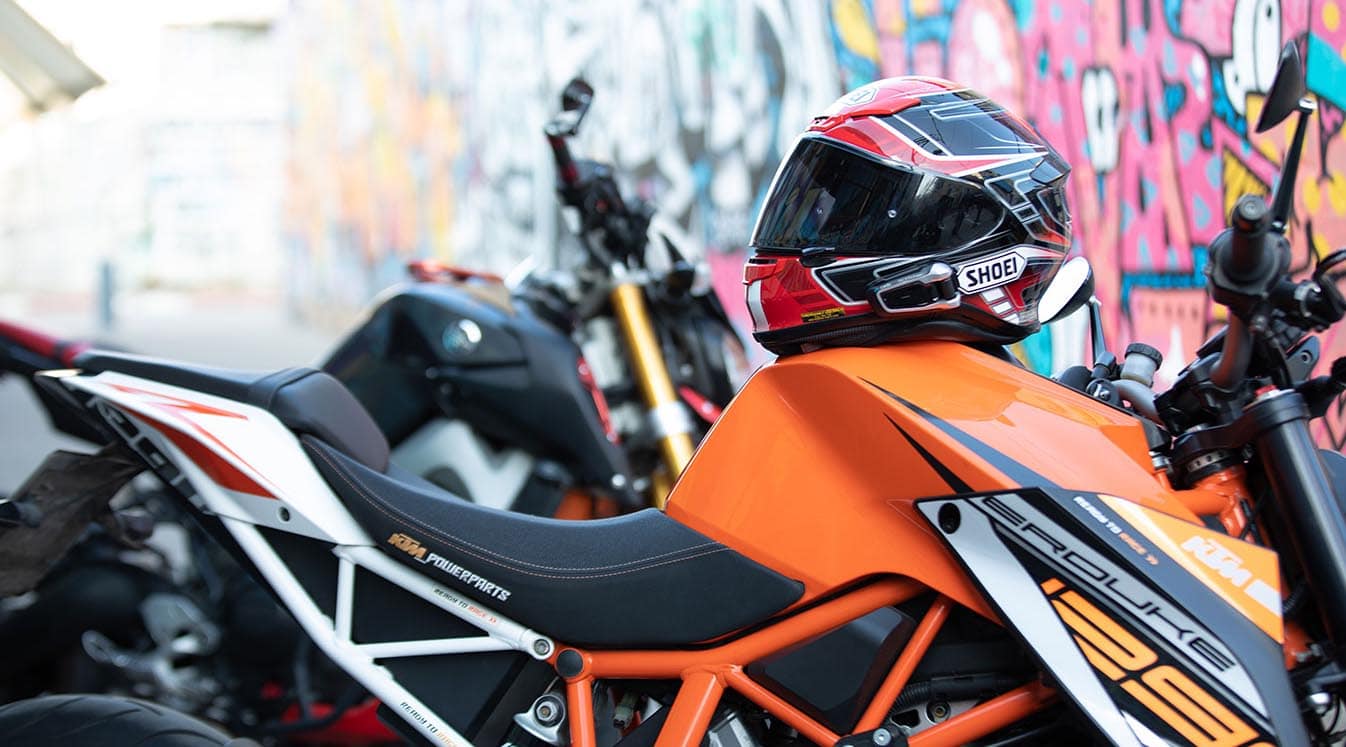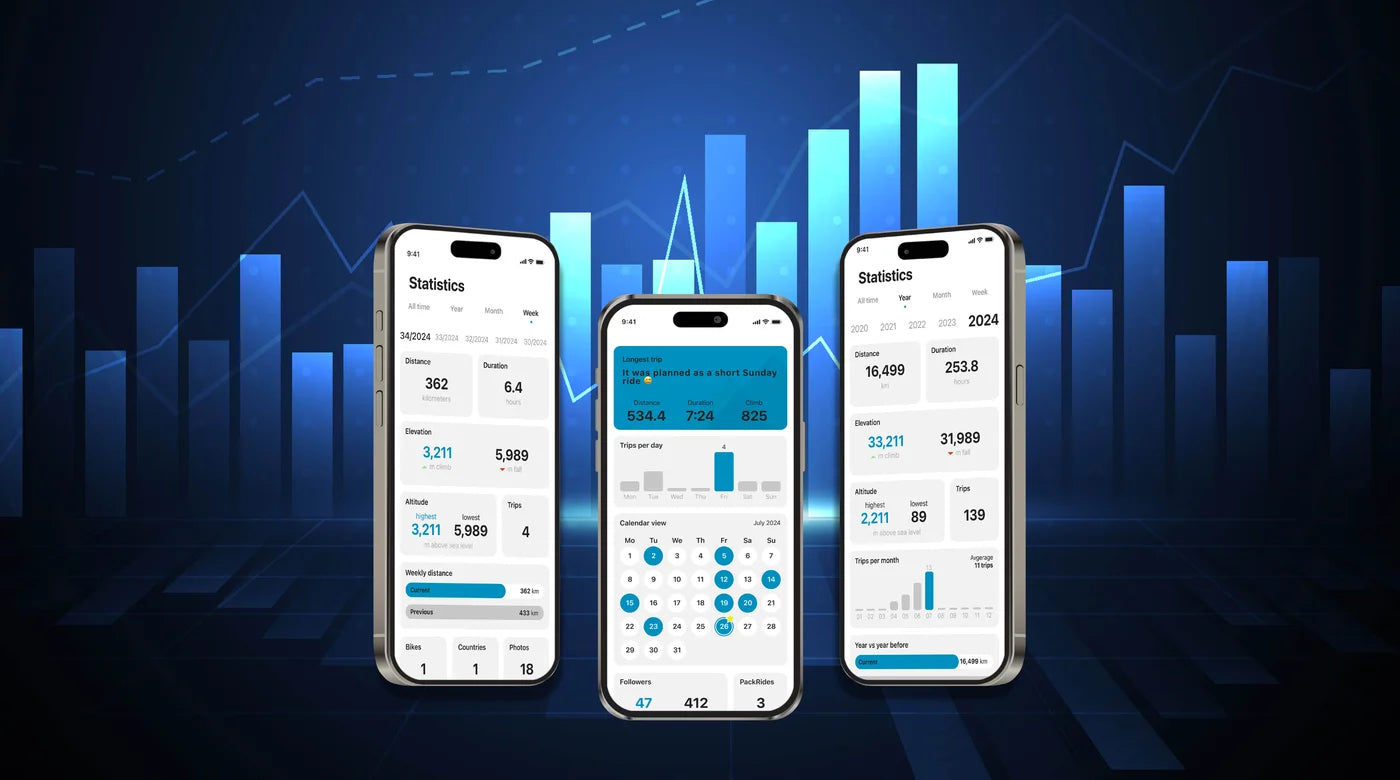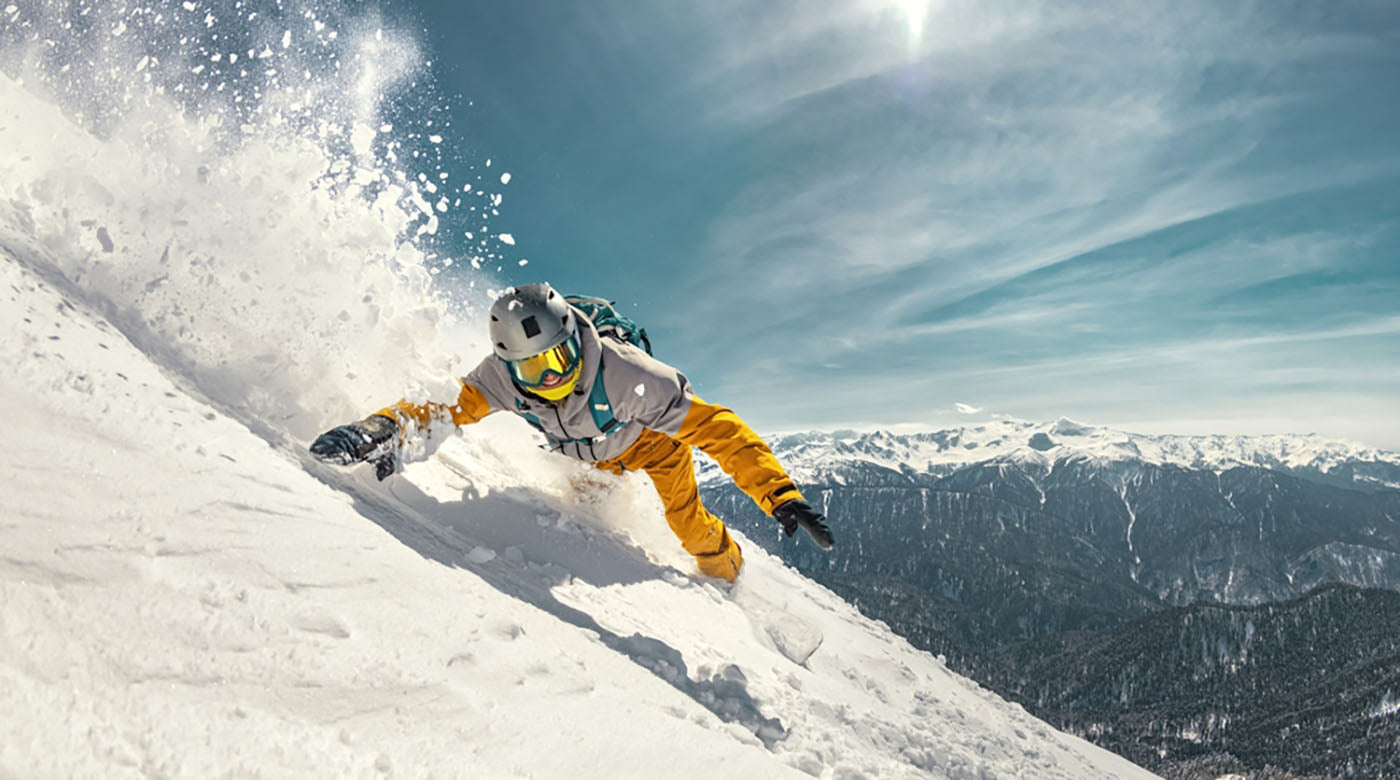It’s safe to say that riding a motorcycle with no helmet in sweatpants, a hoodie, and sandals is typically not recommended. Ultimately, it’s a personal choice whether to ride with any piece of motorcycle safety gear (except in states where helmets are required by law). Still, there’s a reason that many experienced riders use the phrase “all the gear, all the time” to describe their preferred riding state.
Are you ready to protect yourself using the best motorcycle gear available? Good — because we’ve got a complete guide for motorcycle safety gear for you. Follow us as we discuss the best in helmets, gloves, boots, motorcycle helmet intercoms and other essential motorcycle safety gear.
Wrapping Your Head Around Helmets
If you go all-out on just one piece of motorcycle gear, make it your helmet. After all, there’s no airbag on your motorcycle and this is your first line of defense in any accident. No one has head injuries on their joy ride Bingo card, so investing in the best helmet you can afford is not just smart — it’s a critical safety measure for every ride. Here are some considerations to keep in mind when choosing a motorcycle helmet:
- Shape and Size: Your helmet needs to fit you snugly and not move around on your head, but it shouldn’t pinch. Finding the right size helmet will involve determining your head shape, measuring your head to make sure the helmet will fit correctly and consulting the helmet manufacturer’s sizing chart to find a size that matches your head circumference.
- Style: Motorcycle helmets come in a ton of different styles. Full-face helmets offer the best protection, and modular helmets are almost as good and include flip-up face portions for improved air circulation. If you choose to go with a half helmet model, make sure you pick up a face shield to prevent rocks and debris from flying into your face.
- Certifications: At minimum, you need a DOT-approved helmet, which means it meets the relatively lenient helmet standards of the U.S. Department of Transportation. It’s much better if your helmet is also approved under either the Snell Foundation standard or the European ECE standard, both of which are more rigorous.
Booting Up
Motorcycle riding isn’t a hobby where you should just bring any old footwear. Motorcycle boots are another must-have part of the rider’s motorcycle safety gear kit. These are some of the most important features of a good pair of motorcycle boots:
- Height: Motorcycle boots should cover your ankle at minimum, but taller boots will give you better protection.
- Material: Leather is the most popular material for riding boots by a wide margin, although you can find textile alternatives that may be more breathable.
- Reinforced Ankles and Toes: Motorcycle boots should have a reinforced ankle section to provide extra support for the rider and prevent ankle injuries. Toe reinforcement is also common, especially in the left boot, which works the shifter and can thus get worn out quickly.
Jacket of All Trades
Looking cool is a good reason to wear a motorcycle jacket, but it’s not the most important one. A well-made motorcycle jacket is designed to keep you warm, protected and comfortable on your ride. Not every leather jacket with a vague James Dean vibe is an actual motorcycle jacket, so here’s what to look for:
- Built-in Armor: A motorcycle jacket with built-in padded armor in sensitive areas like the elbows and back is a smart investment. If your upper body hits the pavement, your armor can save you from a bad case of road rash — or even from a fractured elbow or vertebra.
- Versatile Protection Options: Motorcycle jackets with removable armor inserts offer flexibility and enhanced comfort for riders. These jackets often include back protectors and additional padding in critical areas, which can be easily removed or replaced to suit different riding conditions or integrated with riding jeans and shirts for a cohesive protective ensemble. Riders can also pair these jackets with vests for added warmth or protection, making them a practical choice for varying weather conditions and riding styles.
- Material: Obviously, leather is the classic choice for a motorcycle jacket, and it’s popular for a reason. Leather is resilient, stylish and can be made waterproof. But textile motorcycle jackets are also increasingly popular, and advances in materials have made the good ones comparable with leather.
- Insulation: Consider your climate and whether you need an insulated motorcycle jacket. Remember that riding at highway speeds can get really cold, even on warmer days. If you want to buy just one jacket, many models with zip-out liners are available, so you can customize the warmth level to your needs.
- Ventilation: The most comfortable motorcycle jackets often have ventilation in areas like the back and underarms, where riders tend to get sweaty and need some air circulation.
- Fashion and Functionality: Modern motorcycle jackets masterfully blend fashion and functionality, making them appealing to a diverse group of motorcycle riders. These riding jackets are not only abrasion-resistant for safety but also stylishly designed to attract all demographics who value aesthetics alongside protection. Despite this, it's essential to always prioritize function over fashion to ensure maximum protection on the road.
Gloves You Love
A rugged pair of motorcycle gloves is another essential motorcycle safety gear piece for the well-equipped rider. What should you look for from a pair of motorcycle gloves?
- Palm Grips: Gloves with grip materials built into the palms will help you keep a firm hold on the handlebars.
- Palm and Knuckle Armor: Some of the best protective motorcycle gloves include armor built into the palms and knuckles to help protect your hands from injury in a crash.
- Insulation: Cold, numb hands can become a big problem if your gloves aren’t warm enough. If you’ll be riding in chilly conditions, get a pair of insulated gloves.
Pants for Your Stance
When shopping for motorcycle pants, consider the following:
- Material: Leather is the classic material for motorcycle pants, and it’s still a popular choice because of how tough it is. But it’s definitely not the only choice, and pants made from various sturdy, reinforced textiles are popular and tend to breathe better than leather does.
- Heat Resistance: Protecting your legs from the engine’s heat is one of the most important functions of motorcycle pants, so look for something with fabric that’s treated for heat resistance.
- Choosing Your Ride or Die Pants: Selecting the ideal pair of riding pants involves more than just style — fit, adjustability and safety features are essential for every rider. Properly fitting pants offer comfort and protection, ensuring that features like knee pads and armor stay in place, equally important for sport bike and dirt bike enthusiasts. Adjustable features like waistbands and ankle straps enhance comfort and safety, allowing for a customized fit that accommodates various riding positions and conditions. Additionally, riding pants with reflective materials are essential for increased visibility, making them a safer choice for women’s and men's biker gear in low-light conditions.
Tuning in to Motorcycle Intercom Systems
Once upon a time, motorcycle hand signals were the only way for motorcyclists to communicate. While hand signals are still a workable option if you like them and feel confident using them, motorcyclists have the power to keep themselves a lot safer with today’s wireless motorcycle communications systems.
These powerful wireless communicators attach to your motorcycle helmet and allow you to form a voice communication network with other riders, so long as those riders also have compatible helmet intercoms. Being able to chat with your riding group on the road is tons of fun, and it’s a great way for new riders to get real-time feedback from more experienced people in their riding groups.
But it’s also a really useful and powerful tool for keeping yourself and the people you ride with safe. Instant real-time voice communication allows you to keep each other alert and coordinate strategies with the rest of your group for dealing with traffic and road conditions. A helmet intercom system that pairs with your phone also allows you to stay in touch with your network while you’re on the road, including emergency contacts if necessary.
Cardo Systems has designed our motorcycle headset systems to define the gold standard of motorcycle communication. These are some of the ways that we do it:
- Next Gen Technology: The best motorcycle headsets use cutting edge tech to deliver the best experience possible for you and your riding group. Cardo’s Packtalk models are the first motorcycle communication system to use Dynamic Mesh Communication, a next gen technology that forms stronger and longer range networks than Bluetooth while remaining compatible with it.
- Advanced Safety Features: Building on our commitment to advanced communication technologies, the Packtalk Pro exemplifies cutting-edge safety and connectivity when it comes to motorcycle intercom systems. Equipped with a sophisticated crash detection system, the Packtalk Pro enhances rider safety by detecting impacts and sending automatic alerts to emergency contacts, integrating seamlessly with your smartphone. The inclusion of premium JBL speakers ensures unmatched audio clarity, enriching your ride with high-quality sound for music and communication. This device serves as protective gear and an essential element in motorcycle riding gear, offering impact protection through its advanced features.
- Smart Connectivity on the Road: Complementing our Packtalk devices, the Riser app revolutionizes the way riders plan, communicate and navigate. This app allows you to effortlessly plan routes with scenic options and connect with fellow riders through an engaging community platform. Whether you're coordinating with your group on a scenic trail or sharing your journey with friends, Riser transforms your riding experience by making connectivity intuitive and interactive. It’s particularly beneficial for those riding in high-visibility areas or engaging in off-road adventures, enhancing airflow and open face communication capabilities.
- Hands-Free Operation: Your helmet intercom should include voice commands that allow you to operate it without fiddling with controls when you should be focused on the road. Cardo intercoms include full voice command functionality that allows a rider to activate the headset’s functions with a simple “Hey Cardo.”
- Phone Pairing: A helmet communication system should offer the ability to pair with your phone and access multimedia functions while you’re riding. Making and receiving calls, streaming your favorite music and podcasts and navigating with a GPS are all a snap thanks to Cardo’s voice interface.
- Crystal Clear Sound: Invest in motorcycle helmet speakers that can deliver the audio experience you want. Cardo has collaborated with the audio innovators at JBL to deliver Bluetooth motorcycle speakers that create the new benchmark for motorcycle audio. Now your motorcycle helmet Bluetooth experience can be taken to the next level.
Final Thoughts
You’ve learned how to protect your body, but do you know how to protect your bike? Our guide to motorcycle maintenance will show you the basics. And before you go, don’t forget to take a peek at Cardo Systems’ complete range of motorcycle headsets.
Level Up Your Riding Experience with the Packtalk Pro




